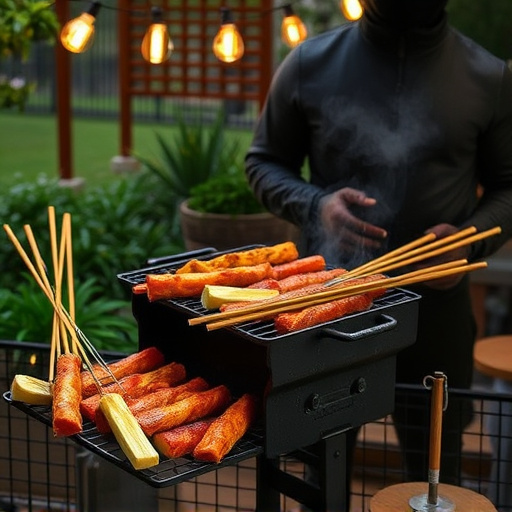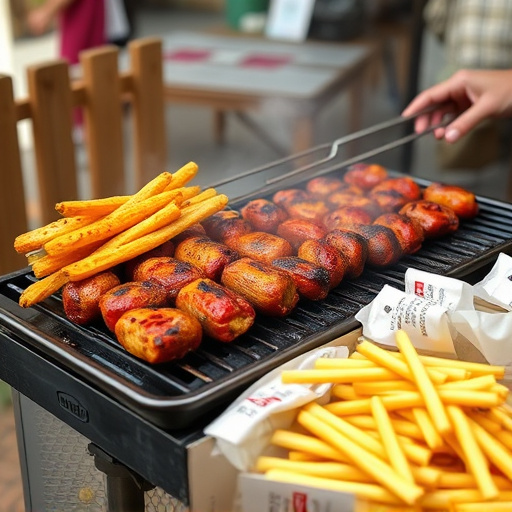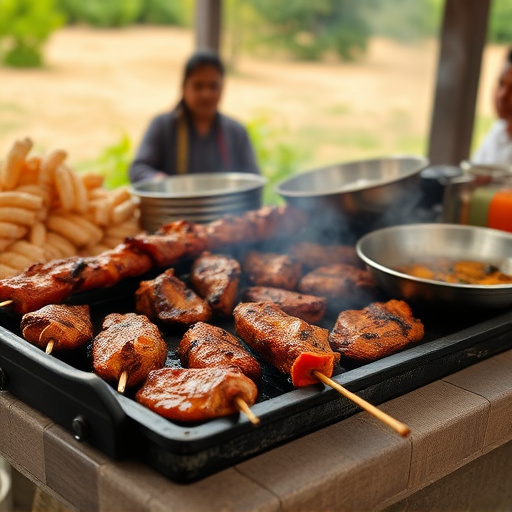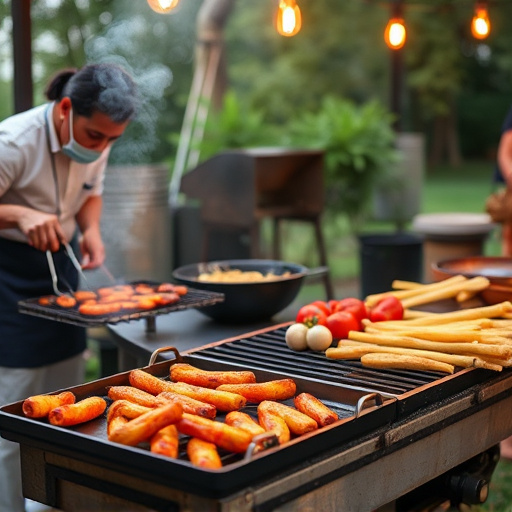Choosing the perfect BBQ rib recipe starts with high-quality, meaty ribs stored cold until ready to cook. Styles vary from St. Louis to baby back and spareribs, each with unique cooking methods for different textures. Key factors include balanced marbling, membrane removal, and marinades combining acids, oils, garlic, herbs, and spices for maximum flavor and tenderness.
Unleash your inner grill master with this comprehensive guide to crafting perfect ribs using classic barbecue techniques. From selecting the right ribs – whether St. Louis-style, baby back, or spareribs – to mastering dry rubs, slow cooking, and finishing touches like glazing with barbecue sauce, we’ve got you covered. Elevate your BBQ game with this proven bbq rib recipe and impress your taste buds with mouthwatering results.
- Choosing the Right Ribs
- – Types of ribs: St. Louis-style, baby back, spareribs, etc.
- – Selecting quality ribs based on marbling and meat to bone ratio
- Marinating for Flavor
Choosing the Right Ribs

When it comes to choosing the right ribs for your classic barbecue techniques, the first step is to opt for quality over quantity. Look for meaty, well-marbled ribs with a good layer of fat, as this will ensure they remain tender and juicy during the slow cooking process. The most common types are baby back or spare rib, both of which offer a perfect balance of meat and bone.
A good bbq rib recipe starts with fresh, high-quality ingredients. Consider sourcing locally raised pork to guarantee optimal flavor and tenderness. Properly storing your ribs before cooking is also key—they should be refrigerated until ready to use, ensuring they stay fresh and prime for that mouthwatering barbecue experience.
– Types of ribs: St. Louis-style, baby back, spareribs, etc.

When it comes to BBQ rib recipes, the world is your oyster – or, more accurately, your plate. The most common types include St. Louis-style ribs, known for their meaty, thick cuts and minimal bone structure; baby back ribs, a popular choice thanks to their balance of meat and bone and tender, flavorful result; and spareribs, which are larger and tougher but offer a hearty, satisfying experience when slow-cooked. Each style has its own unique charm and preparation method, ensuring there’s a perfect rib for every taste.
Whether you’re aiming for fall-off-the-bone tenderness or a slightly chewier bite, understanding the nuances of each rib type is key to achieving BBQ rib perfection. St. Louis-style ribs, for instance, benefit from dry rubbing and high heat for a caramelized exterior, while baby back ribs often rely on a wet rub and lower temperatures to achieve that coveted, juicy tenderness. Spareribs, due to their size, usually require an extended cooking time and a hearty sauce to really bring out their flavor.
– Selecting quality ribs based on marbling and meat to bone ratio

When it comes to classic barbecue techniques for perfect ribs, choosing the right cut is paramount. Opt for ribs with generous marbling—the flecks of fat throughout the meat—as this adds flavor and moisture during cooking. Look for a rib with a healthy meat-to-bone ratio; a good balance ensures that each bite is both meaty and tender. Avoid ribs that are overly lean, as they can dry out easily under the heat. Quality ribs are the foundation of any successful BBQ rib recipe, setting the stage for flavors to develop and meld together during slow-cooking processes.
The ideal cut should have a membrane on the bone side; this thin, tough layer will render down and become crispy over time, contributing to that beloved barbecue texture. While some prefer to remove it beforehand, leaving it intact allows for extra flavor infusion as it cooks. These simple considerations in selecting your ribs can significantly impact the overall quality of your final dish, ensuring a satisfying BBQ rib recipe that pleases any palate.
Marinating for Flavor

Marinades are a secret weapon in the quest for mouthwatering BBQ ribs. A good marinade can transform simple ribs into an explosion of flavor, tenderizing them and adding depth to each bite. When it comes to rib recipes, time is your ally; the longer the ribs soak in the marinade, the better. This process not only enhances taste but also helps break down some of the meat’s tough connective tissues, making them easier to chew.
Choosing the right ingredients for your BBQ rib recipe marinade is key. A balance of acids (like vinegar or citrus juices) and oils creates a harmonious blend that coats and tenderizes the ribs. Additions like garlic, herbs, and spices bring aromatic complexity, ensuring each rib is a flavorful delight. Remember, marinades can be as simple or intricate as your taste buds desire—the key is to let the ribs sit and absorb all those delicious flavors before firing them up on the grill.
